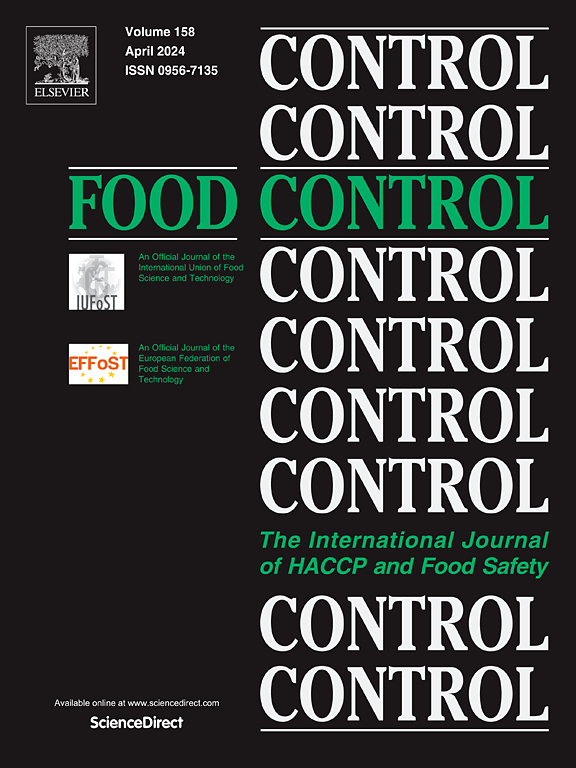A rapid and nondestructive quantitative detection method for total and organic selenium in selenium-enriched kefir grain based on hyperspectral imaging
IF 5.6
1区 农林科学
Q1 FOOD SCIENCE & TECHNOLOGY
引用次数: 0
Abstract
Rapid monitoring of total and organic selenium content of Kefir grain is important for the development of selenium-enriched foods. First, a portable hyperspectral system was used to obtain spectra of selenium-enriched Kefir grain. Second, the characteristic variables were screened based on competitive adaptive reweighted sampling (CARS), bootstrapping soft shrinkage, genetic algorithm, and particle swarm optimization. Then, the quantitative prediction performance of extremely randomized trees, partial least squares (PLS), and least squares support vector machine models were compared. For the prediction of total selenium content, CARS-PLS performed the best, with a prediction set correlation coefficient and relative prediction deviation (RPD) value of 0.97 and 3.88, respectively. For organic selenium, the CARS-PLS predicted set correlation coefficients and RPD values were 0.94 and 2.97, respectively. CARS-PLS realized the rapid prediction of total and organic selenium content within 1 min. This provides new ideas for screening selenium-enriched microorganisms and rapid detection of selenium content.
基于高光谱成像的富硒酸乳酒糟中总硒和有机硒的快速无损定量检测方法
快速监测 Kefir 谷物中的总硒和有机硒含量对于开发富硒食品非常重要。首先,使用便携式高光谱系统获取富硒克菲尔谷物的光谱。其次,基于竞争性自适应加权采样(CARS)、引导软收缩、遗传算法和粒子群优化等方法筛选特征变量。然后,比较了极随机树、偏最小二乘(PLS)和最小二乘支持向量机模型的定量预测性能。对于总硒含量的预测,CARS-PLS 的预测集相关系数和相对预测偏差(RPD)值分别为 0.97 和 3.88,表现最佳。对于有机硒,CARS-PLS 预测集相关系数和相对预测偏差值分别为 0.94 和 2.97。CARS-PLS 实现了在 1 分钟内快速预测总硒和有机硒的含量。这为富硒微生物的筛选和硒含量的快速检测提供了新思路。
本文章由计算机程序翻译,如有差异,请以英文原文为准。
求助全文
约1分钟内获得全文
求助全文
来源期刊

Food Control
工程技术-食品科技
CiteScore
12.20
自引率
6.70%
发文量
758
审稿时长
33 days
期刊介绍:
Food Control is an international journal that provides essential information for those involved in food safety and process control.
Food Control covers the below areas that relate to food process control or to food safety of human foods:
• Microbial food safety and antimicrobial systems
• Mycotoxins
• Hazard analysis, HACCP and food safety objectives
• Risk assessment, including microbial and chemical hazards
• Quality assurance
• Good manufacturing practices
• Food process systems design and control
• Food Packaging technology and materials in contact with foods
• Rapid methods of analysis and detection, including sensor technology
• Codes of practice, legislation and international harmonization
• Consumer issues
• Education, training and research needs.
The scope of Food Control is comprehensive and includes original research papers, authoritative reviews, short communications, comment articles that report on new developments in food control, and position papers.
 求助内容:
求助内容: 应助结果提醒方式:
应助结果提醒方式:


